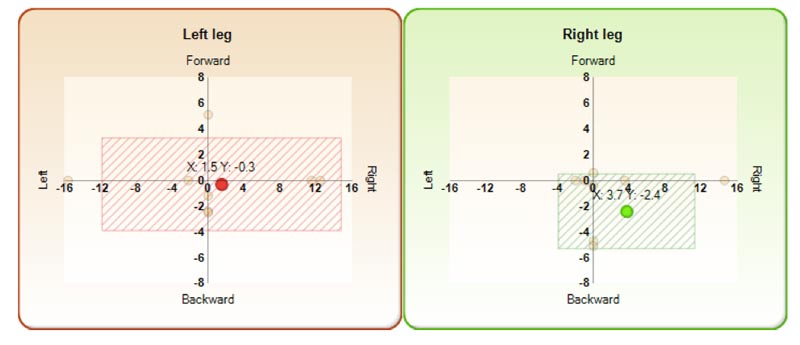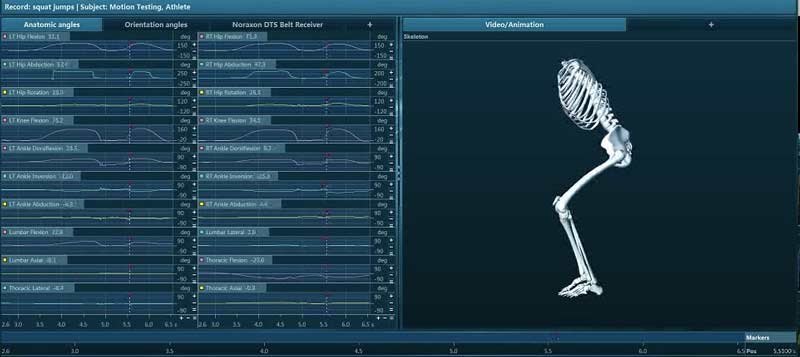
By Carl Valle
After a recent presentation on plyometrics, I was asked what exercises I would do with athletes to develop speed or enhance overall training. Ideally, each exercise in training directly improves the body so athletes can run faster, jump higher, and last longer. At times, training serves as a temporary placeholder, a staple to training, or an option only when elite. I have no affinity to particular exercises, but eventually you have do something, and have a rationale behind it. Besides the theoretical aspects of training, application and execution of modalities is the final step in coaching. Below are specifically the bread-and-butter options I like to tap into with athletes. Some athletes will do all of the options while others will touch upon a few for brief periods. Many great leaders have said that there are no magic exercises, but the real sorcery comes from how it is placed, adjusted, and instructed.

Hurdle Jumps for Rhythmic Power
The use of hurdles to create visual barriers is more about helping the athlete with arousal and developing rhythm with spacing than with maximal power. I have had one athlete destroy the hurdle top while doing them, and we were lucky not to experience any bodily harm. This is very common with coaches that look for magic bullets, but realize that dodging friendly fire is sometimes part of the process. To avoid injury, I strongly suggest PVC pipes and not using hurdles at all, including collapsible options. Strangely, so many private facilities spend money on expensive hurdles that are not portable, very expensive, and downright painful if an athlete makes a mistake. For the price of two top-of-the-line hurdles, a coach can have 20 excellent hurdles made, including custom collars and even a logo if desired. I like having homemade hurdles in 100-cm heights and 80-cm heights, as they can be portable hurdles for traveling abroad for both sexes for sprint hurdlers and those wanting to do hurdle jumps.
The hurdle heights are not actual displacements of jumping, since they are similar to box jumps, exercises that seem to have clear quantification of output, but in reality they are just estimated visual reference points. Again, the role of the barrier is to keep the athlete honest and raise arousal levels vertically, but the spacing is about ensuring that the jumps are rhythmically executed. Power is a similar to an ocean wave, where athletes will be alternating rapidly between high and low rises of energy. Exact spacings are not concrete, but 4 to 6 feet is typical. Two requirements are necessary when the spacings elongate: They are horizontal starting speed and some coordination demands. Most approaches to hurdle jumps are walking or similar, but I suggest athletic tape or track markings to ensure the first jump before the first hurdle starts off right. We have all seen athletes start off with too much horizontal speed and spend each jump trying to steer out of a bad rhythm. I suggest using consistent set-ups and only throwing a wrinkle to hurdle jumps with advanced athletes. Alternating heights with low or high hurdles is a good option to help athletes reset themselves to maintain rhythm or regain power. Another option is to add them in a complex to expose the body to longer durations of neurological output. Other options of variance exist, but with so many other requirements of training, I have yet to see benefits of change besides the boredom of a coach. Variance intrinsically does help prevent staleness, but I prefer to have a direct rationale instead of simply doing things to “mix it up.” Training is about development, working out for fitness is more enter-training.

Lateral and Medial Hops for Injury Prevention
Single-leg plyometrics is highly demanding, and I do not suggest challenging the body with single-leg options maximally. Two of my favorite options are lateral and medial hops with all athletes to teach the feeling of stiffness and help develop foot strength. Keeping the hip loaded and the knee straight, the single-leg hops emphasize muscles below the knee. A timeless adage is to keep the foot “locked in a ski boot,” so it is an anatomically effective position for intense forces. The hops overload the medial gluteals better than clamshells and other low-level exercises. Injury prevention is something that may yet be researched with hops, and little evidence exists to show a conclusive agreement for reducing lower extremity injuries outside the general recommendations of a few papers.
An obvious question is whether going left or right (medial and lateral directions) on a single leg has a difference. Does going toward the right on the left foot have a different effect than going toward the left on the left foot? No studies exist on the aforementioned question, but I have experimented with wireless surface EMG and foot-pressure mapping, including motion-capture analysis. What is clear from the data is that hopping on one leg overloads stabilizers more than bilateral exercises, but it is not the Holy Grail. The bilateral deficit is grossly overestimated and misinterpreted since double leg exercises in maximal efforts are not the same for advanced athletes as they are for “voluntary subjects.” Expecting speed enhancement directly from tapping into the bilateral deficit by single-leg training misses out on an array of neuromuscular adaptations from double-leg jumping. Therefore do single-leg training for health, but don’t challenge the exercises as they artificially overload muscles that need to stabilize and assist joints, not overwhelm them with both support and propulsion.

Figure 1: Before one starts doing lateral and medial hops, using a screen like the Drift Test by Optojump is an excellent starting point. If you are having problems jumping in place, find out why by adding video, motion capture, sEMG, and even pressure mapping with in-shoe technologies. Dave Tenney suggested the Drift Test in his interview. Adding measurements that explain the cause is a wise option.

Speed Bounding for Coordination
Team sports should probably shy away from speed bounding for many reasons. First, the athletes in professional sports have an unfortunate combination of being bigger and having less training time. A linebacker today could have been an offensive lineman years ago, and anyone following professional soccer knows that elite players have an inhuman schedule of games. Good teachers can most likely teach athletes to bound, but, as mentioned earlier with hops, single-leg training has risks when we overload it. I do like bounding for speed for jumpers and some athletic sprinters for many reasons. First, I like athletes to challenge tendons as an investment for later. Second, speed bounding is a great way to assess elastic abilities, something that may not be essential for all sprinters, but may help when stagnation arises. Finally, bounding for speed is an excellent way to help with maximal speed when athletes do not have huge indoor facilities or when weather is extremely limited. I like 15-meter accelerations in a standing position into three 10-meter segments for time. Video analysis and speed evaluation can observe for conservation of horizontal speed (efficient utilization of elastic energy). Mentioned earlier, noted world expert Randy Huntington suggested different techniques for speed bounding, but a general starting place is focusing on keeping the hips neutral and keeping the recovery leg with slightly exaggerated front-side mechanics.

Depth Jumps for Screening and Evaluation
The Depth Jumps for Speed article thoroughly investigated the exercise, but depth jumps are not just ways to attempt to create vertical power; they are superb screening and profiling tools. Athletes can be screened for foot function, muscle coordination, and the ability to handle eccentric forces with the reactive strength index or RSI. Combined with pressure mapping and video evaluation, the RSI can help show if an athlete is leaking in the lower extremity grossly. While a depth jump will not make a mule into a thoroughbred, it will help an intermediate talent get better slightly if he or she has other talents. The five points I look at when evaluating depth jumps are the following.
Ratio between Knee Stiffness and Ankle Dorsiflexion — A mobile ankle with poor stiffness risks Achilles strain during jumping if the knee is a better dissipater of forces and has great stiffness and eccentric abilities. Coaches are seeing more Achilles problems because athletes are doing programs that are so conservative; they are closer to functional bodybuilding than to athletic development.
Poor RSI Relative to Box Height and Athlete Weight — A power-to-weight ratio isn’t ideal, but a speed-to-weight ratio combined with the RSI may be a helpful metric to see if an athlete is producing enough efficient vertical elastic power. Athletes can see if they are starting to reach a point where additional weight may interfere with further gains in performance, in addition to selecting the right box height.
Excessive Valgus Motion and Foot Pronation — Knees are influenced by hip strength and coordination, but a good start is foot pronation. Some athletes have great running technique and stiffness, creating no need to address pronation. Other athletes doing bilateral jumping can have a massive valgus collapse, even with very strong hips. Measuring this can be done with a simple app like Dartfish on mobile devices.
Poor Hip Engagement and Force Distribution — Good jumping balances out the hips and knees so the athlete uses an even distribution of muscular recruitment. Athletes who use just the knee joint to create stiffness usually overload two of the three joints, creating a long-term risk to tendons. Some soreness will be felt doing depth jumps as they challenge tendons, but excessive pain that interrupts sprinting will require the coach and athlete to reevaluate the inclusion of the exercise or application of it.
Prior History of Joint and Tendon Pathology — A simple way to evaluate depth jumps is the injury rate and limitations of joint and tendons. Very few athletes pull hamstrings or adductors, but tendons and joints take a beating with plyometrics. While no magic ratio or percentage exists for injuries, a program that sees no pattern of injuries and the rate being less than one’s counterparts is a good start. Eventually using depth jumps, even if the exercise is done right, isn’t going to be an option if it is adding to loading a pathology.

Jump Squats for Power Management
The use of jump squats is not going to develop athletes as well as other traditional exercises for several reasons, but they have other, indirect benefits. While I like jump squats for athletes to monitor power and serve as a warm-up, jump squats are very useful to essentially every coach and athlete. Four options or styles exist with jumping up and down with two legs. One can squat jump (start statically), employ a counter movement jump with no arms (down and up quickly), do a traditional full vertical jump with arms, or repeat jumping in place. Jump squatting can be done with different loading options, such as weighted vests and the use of dumbbells and barbells. I like extremely light loads with external options (dumbbells and barbells), and weighted vests are great for those using a smart platform (integrated force plate and power rack), but linear positional transducers are good ways to monitor fatigue and manage power. Athletes and coaches can then decide how to adjust, if needed, the main training load or stimulus.

Figure 2: Noraxon’s Platform is an excellent way to see underlying issues by integrating a holistic and comprehensive array of data sets. After enough data is collected, simple and effective interventions that are evidence-based can be made. It is fine to read research, but applied training and rehabilitation should show equal evidence of outcomes based on changes that are objective.
Jump squats are not easy to do on- season for basketball players and jumping athletes as they overdose the demand on tendons. I do find them favorable for team sport athletes who are in their off-season and compete on grass surfaces.
Closing Thoughts on Workouts and Planning
All of the exercises are just personal preferences, but the rationale behind them should influence a coach or self-trained athlete to pick what works for them because each has a specific thought-out reason. Jump training should cause a visible and measurable improvement to the sprinting, but this may be a multiple-season requirement. Find what works for you and refine the use, but don’t have any pet exercises or commit to workouts that you invest time into. It is convenient to use familiar workouts because they feel like home, but use specific choices because they are suitable to the situation you are in. It is OK to choose nothing if you feel a good running-based program is working, but if you do apply plyometrics in a program, I suggest thinking about the exercises shared in this article.
Please share this article so others may benefit.
[mashshare]Related Articles
Part 1: The Science of Plyometrics: Key Questions on Jump Training
Part 2: Plyometrics for Speed Development
Part 3: Teaching Plyometrics
https://twitter.com/ZBrulet/statuses/491708842091110400


